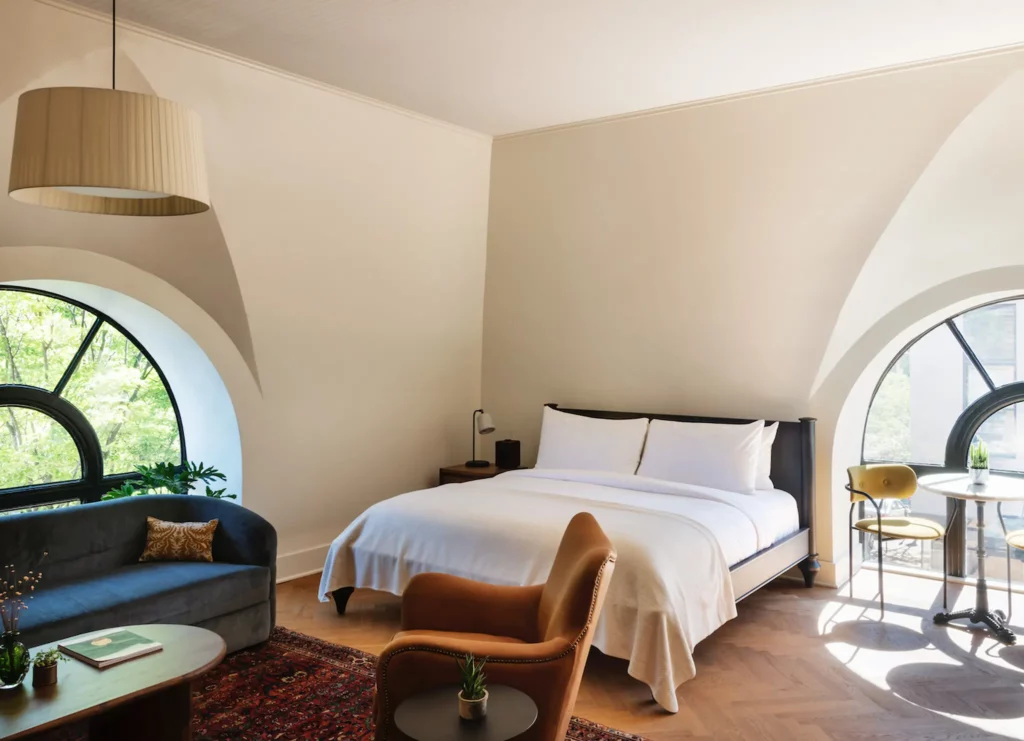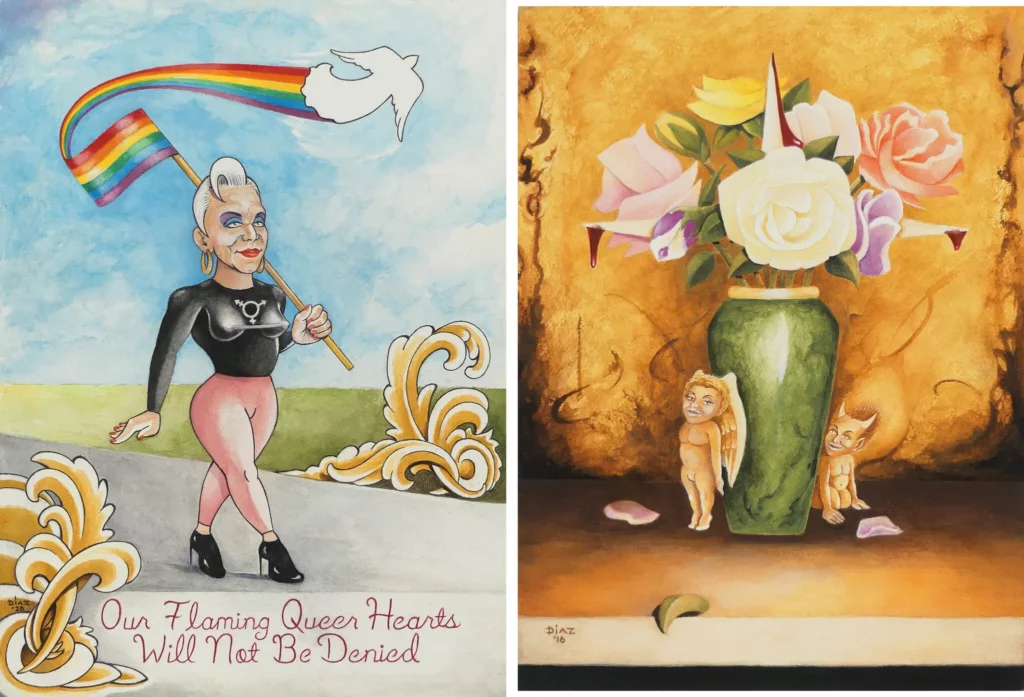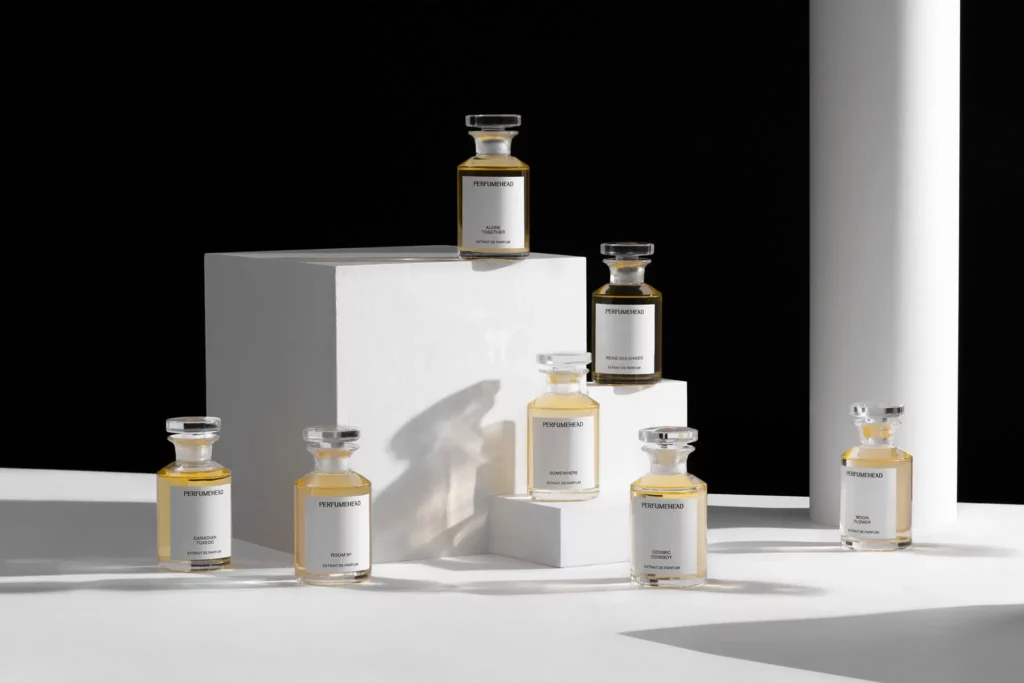Statement Chairs With Prints by Christopher John Rogers
It may be fashion week, but you won’t find the collection Christopher John Rogers launched yesterday on any runway. Instead, the designer has lent his eye for color and print to Orior, the Irish design studio and furniture manufacturer. “I’ve always loved creating work that toes the line between ostentatious and pragmatic,” he says. “I think there’s something really exciting about bringing that fantasy into the real world and seeing how people interpret it in their everyday lives.” This four-piece offering of distinctive chairs certainly delights in that tension: Rogers’s gradient dot print, which brightened street style this spring, highlights the joyful sweep of a wingback chair the designer chose for his own home, while a duo of graphic black-and-white prints originally paired on an evening gown bring a mod mood to a chair inspired by 1960s Scandinavian style. The collaboration is rooted in the mutual admiration between Rogers and Orior’s creative director, Ciaran McGuigan, who initially met at the Savannah College of Art and Design. “Orior remains a family- and friends-run company,” says McGuigan (his parents, Brian and Rosie McGuigan, founded the brand in 1979), “so it means everything to us to have partnered with Christopher in this way.” Bringing an additional facet of community is the fact that all proceeds from the collection will be donated directly to grass-roots organizations identified with the support of Color for Change, whose work uplifts and supports the Black community. Prices on request, oriorfurniture.com.
A Delaware Hotel Inside a Former Bank

Guests enter the Quoin — set in a late 1800s Romanesque Revival building designed by the architect Frank Furness and located in Wilmington, Del. — through a set of gleaming brass gates. Inside, they’ll find a lobby appointed with plush sofas and Jacques Adnet-inspired leather chairs arranged around a double-columned fireplace and, in the adjoining space, a cafe with an antique zinc bar and handblown glass partitions between the banquettes. It was the Philadelphia-based Method Co., with the help of Stokes Architecture and Design, that transformed the former bank and safe deposit repository into a homey retreat with Shaker-style interiors. The 24 rooms and suites feature ebony walnut and white oak furnishings and Malayer, Sarouk and Oushak rugs in shades of raspberry and rose, as well as hand-drawn illustrations reminiscent of those included in a Dutch botanical digest published around the time the building was built. They’re comfortable spots to work from, but even those not fully on vacation should leave time to visit the hotel restaurant, which serves wood-fired Mediterranean dishes such as coal-roasted beets and triangoli pasta filled with buffalo milk cheese, or either of the on-site bars: There’s the Rooftop at the Quoin, which offers views of the city’s downtown, while Simmer Down serves cocktails in a room once used to store furs, silks and gold bars. From $375, thequoinhotel.com.
A Debut Exhibition of Joyful Queer Art

In Jamie Diaz’s still life “Even Flowers Bleed 3” (2016), the wounded petals connote death. But with a couple of exceptions, they have not yet fallen onto the table below, where a miniature angel and devil coyly flirt. Like much of Diaz’s oeuvre, it’s a cross between classical and comix art and nods toward other putative binaries (good and evil, feminine and masculine, difficulty and ease). In her pieces, opposites not only attract but work in concert and collaboration. Diaz is a Mexican American trans woman and a self-taught artist who has been honing her craft for most of her life, close to half of which has been spent at a men’s prison in Texas. Her debut solo exhibition, opening at Daniel Cooney in New York this week, includes works she’s created over the past decade. Diaz does not eschew overt and ebullient messaging: In “Queer Spirit (Self-Portrait)” (2020), she depicts herself as doubly out, marching against a boundless sky, wearing the transgender symbol on her chest and carrying a pride flag. Beneath her heels, cursive lettering offers a rallying cry and promise for the future: “Our Flaming Queer Hearts Will Not Be Denied.” “Even Flowers Bleed” is on view from Sept. 15 through Oct. 29, danielcooneyfineart.com.
A Fragrance Line Inspired by California

When Daniel Patrick Giles, whose long career in beauty and fashion has included stints at Holt Renfrew, Benefit Cosmetics and Perricone MD, began working on his own fragrance brand three years ago, his aim was to get people to explore what he calls the “osmocosm” (osm- is the ancient Greek root for “smell”) with, he says, “intention and curiosity,” much like they might consume film, music or poetry. To do so, he’s debuted seven unisex fragrances that were partly inspired by Los Angeles, his home of 10 years and a place he considers full of olfactory complexity, from the waves at Venice Beach to the jacaranda trees of West Hollywood. With Alone Together, a standout from the line, which he’s named Perfumehead, he wanted to evoke the feeling of lounging in a loved one’s slightly dirty shirt and ended up presenting the perfumer Celine Perdriel with an entire scrapbook filled with images of art and places, including the lush Flamingo Estate in the Los Angeles hills, that he associates with just that. Perdriel also drew from her own experience of keeping a jacket of her father’s as a memento during the early days of Covid when they had to be apart. She ultimately came up with the soft citrus scent, which has notes of lime, pink pepper and basil and is grounded by those of vetiver and patchouli. Each fragrance is accompanied by a poem (“Ethereal and ephemeral like a scent caught/ On a momentary breeze”) that, Giles hopes, will let buyers “escape into the rhythm of the words and help them interpret the smell in a personal way.” “It’s scent as cinema,” he adds. “It’s my moment, it’s your moment, it’s anyone’s moment.” $425 each, violetgrey.com.



















Comments